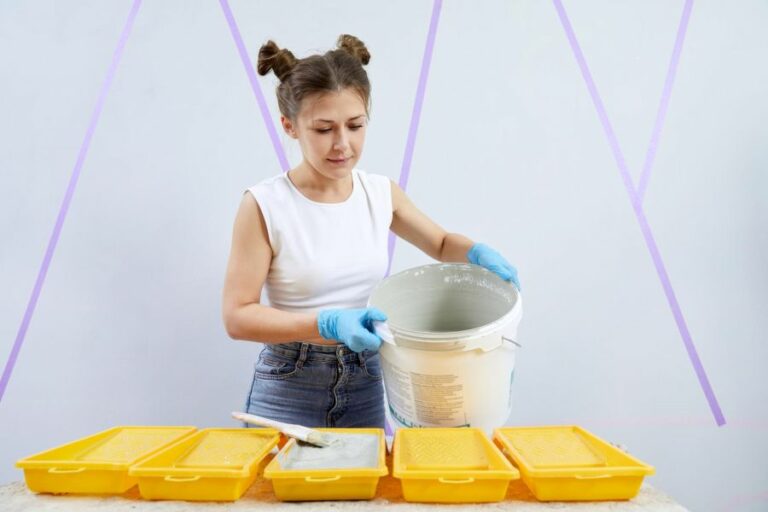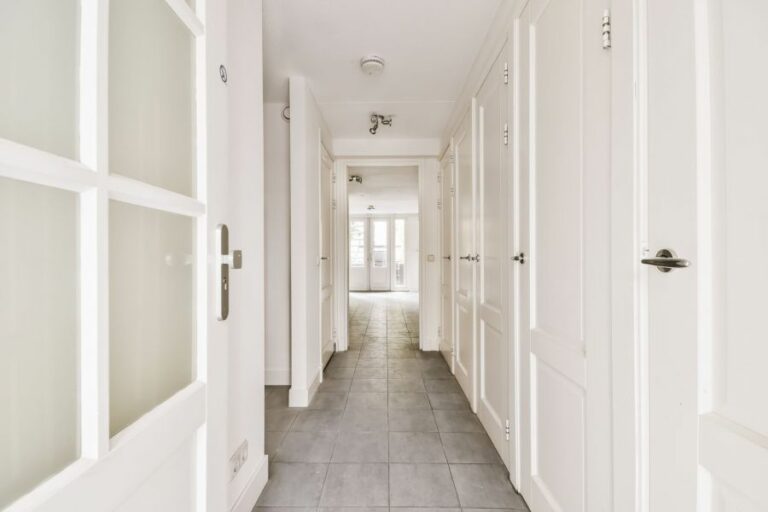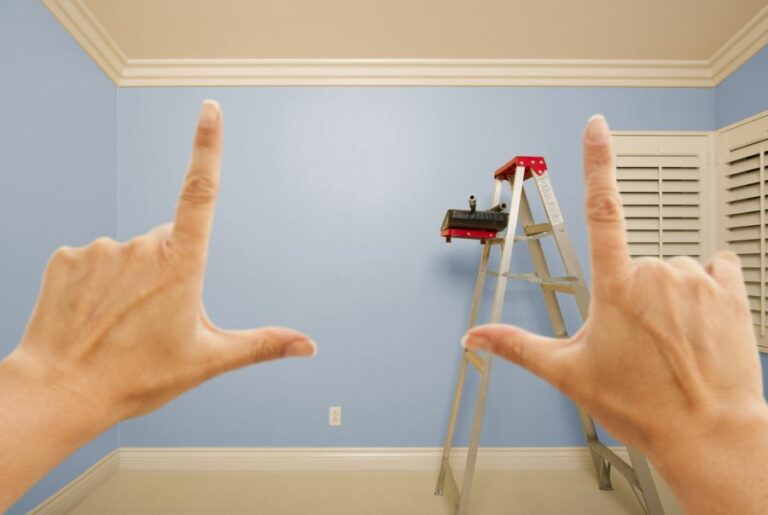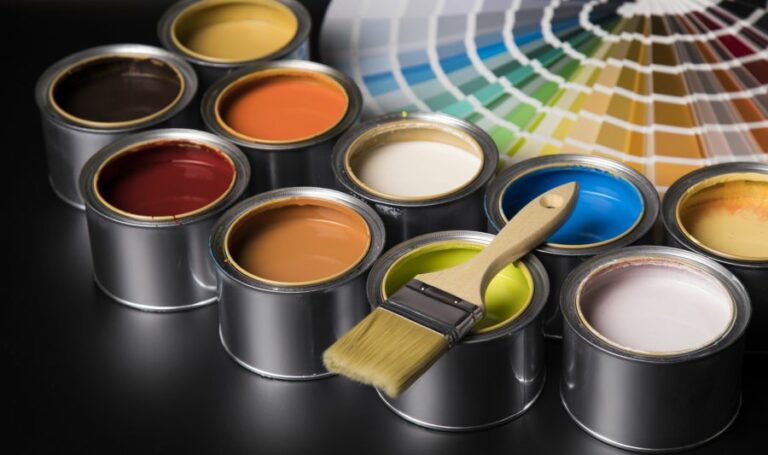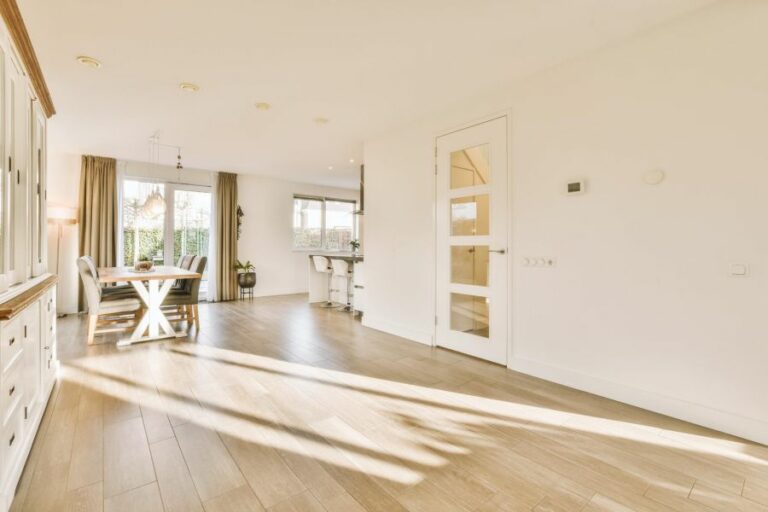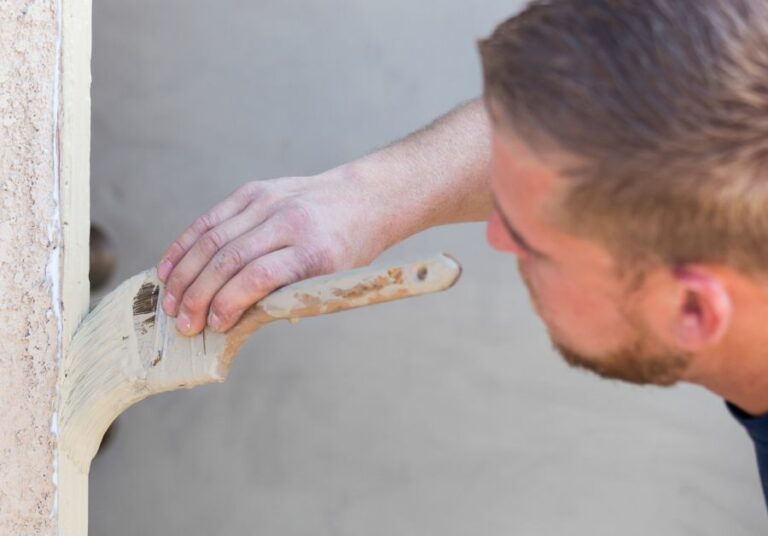Water-Repellent Paint Choices For Indoor Use, 25 Things You Should Know
Choosing the right water-repellent paint for your indoor walls can make all the difference in the long run. Worry not, as I am here to guide you through the selection process with ease. Let’s dive into the best options and bring you closer to a moisture-free and beautiful indoor space.
Water-repellent paint choices for indoor use:
Indoor water-repellent paint options include acrylic-based, silicone-based, and epoxy-based paints. Acrylic-based paints, such as Behr Premium Plus Ultra and Dulux Weathershield Max, offer easy application, durability, and resistance to wear. Silicone-based paints, like Sherwin-Williams Duration Home and KILZ Interior/Exterior Masonry Waterproofing Paint, create a strong, flexible barrier against water penetration. Like Rust-Oleum EpoxyShield and Benjamin Moore Corotech High-Performance Coatings, epoxy-based paints provide a robust, water-resistant coating ideal for high moisture exposure areas.
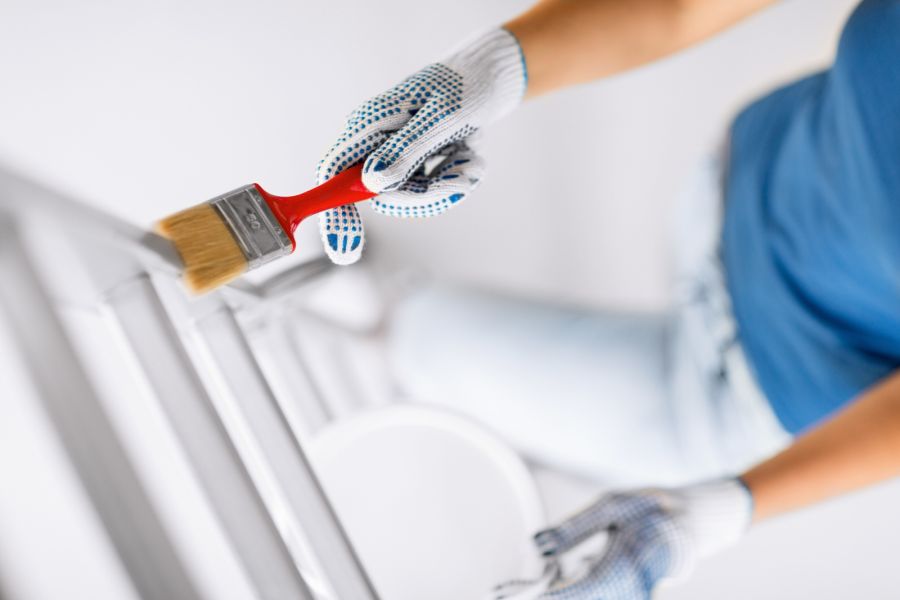
Considering water-repellent paint for your indoor spaces? Read on to uncover the top choices for various surfaces and environments, ensuring long-lasting protection and durability. Discover expert tips and recommendations to help you make the best decision for your home.
Contents
- 1 Indoor Water-Resistant Paint Options
- 2 Top Waterproof Interior Paint Selections
- 3 Wall Paints with Waterproof Qualities
- 4 Ideal Waterproof Ceiling Paint Options
- 5 Varieties of Water-Soluble Paints
Indoor Water-Resistant Paint Options
Protecting your walls and surfaces from water damage is essential, especially in areas with high humidity or moisture exposure. Using water-repellent paint can greatly reduce the risk of mold, mildew, and other water-related damage.
• Acrylic-Based Water Repellent Paint
One of the most common and effective types of water-repellent paint is acrylic-based. These paints are water-soluble, making them easy to apply and clean up.
Acrylic-based water-repellent paints are known for their excellent adhesion, durability, and resistance against wear and tear. Some recommended acrylic-based water-repellent paints include:
– Behr Premium Plus Ultra
This paint product, manufactured by Behr, is renowned for its exceptional performance and durability. In addition to repelling water, it also provides excellent protection against stains and mildews, making it an ideal choice for indoor areas that are prone to moisture issues.
– Dulux Weathershield Max
Dulux Weathershield Max, a product from Dulux, is another excellent acrylic-based water-repellent paint option. It offers superior coverage and long-lasting protection against water damage, stains, and algae growth.
• Silicone-Based Water Repellent Paint
Silicone-based paints are another effective option for protecting your indoor surfaces from water damage. Silicone creates a strong yet flexible barrier on the surface, allowing it to resist water penetration while accommodating any minor movements or fluctuations.
Some highly recommended silicone-based water-repellent paints are:
– Sherwin-Williams Duration Home
Sherwin-Williams offers the Duration Home paint, which is known for its high-quality silicone technology, offering long-lasting protection against water infiltration and stains. Additionally, it’s an environmentally friendly product with low VOCs (volatile organic compounds), making it a safe choice for your home.
– KILZ Interior/Exterior Basement and Masonry Waterproofing Paint
KILZ is another well-known brand for reliable water-repellent paint options. Their Interior/Exterior Masonry Waterproofing Paint contains silicone additives for increased waterproofing capabilities. It is specially designed to withstand hydrostatic pressure, making it suitable for both indoor and outdoor use.
• Epoxy-Based Water Repellent Paint
Epoxy-based paints consist of a two-component system (resin and hardener) that, when mixed, creates a strong, water-resistant coating.
These paints are ideal for areas exposed to high levels of moisture or in need of a waterproof barrier due to increased water exposure. Some top epoxy-based water-repellent paint choices include:
– Rust-Oleum EpoxyShield
Rust-Oleum’s EpoxyShield range of products is known for its durability and protection capabilities. When applied correctly, these epoxy-based paints offer a water-resistant barrier that can withstand heavy moisture exposure, perfect for indoor spaces prone to water damage.
– Benjamin Moore Corotech High-Performance Coatings
Benjamin Moore offers a range of Corotech high-performance epoxy coatings that provide excellent water-repellent properties. They are highly resistant to moisture penetration, abrasion, and chemical exposure, making them ideal for both residential and commercial applications.
• Choosing the Right Water Repellent Paint for Your Needs
To determine the right water-repellent paint for your specific needs, consider the following factors:
- The level of moisture exposure in the area you’re painting
- The type of surface (wood, metal, concrete, drywall, etc.) you’re painting on
- The desired finish (smooth, textured, or glossy) based on your aesthetic preferences
- Any additional features, such as mold or mildew resistance that may be important to you
In conclusion, the choice of water-repellent paint for your indoor spaces will depend on the specific conditions and requirements of the area. Acrylic-based, silicone-based, and epoxy-based water-repellent paints are all excellent options, each with its unique strengths and benefits.
By considering your specific needs and preferences, you can make an informed decision to ensure that your indoor surfaces remain protected from water damage.
Top Waterproof Interior Paint Selections
Waterproof paint has become increasingly essential for homeowners and professionals to combat the issues of dampness, mold, and water damage.
• Why Indoor Waterproof Paint is Essential
Indoor waterproofing not only prevents water infiltration but also helps maintain a healthy and comfortable living environment. High-quality waterproof paint ensures that indoor spaces remain free from mold, mildew, and other potentially hazardous growths.
Moreover, using the right paint can prolong the life of your walls, ceilings, and foundation.
• Characteristics of the Best Waterproof Paint for Indoor
When choosing the best waterproof paint for indoor use, consider the following aspects:
- Consistency and ease of application
- Waterproof capabilities
- Durability
- Resistance to mold and mildew
- Quick drying time
Additionally, look for paints with low VOC (Volatile Organic Compounds) levels to minimize environmental impact and reduce odors during application.
• Recommended Waterproof Paints for Indoor Use
Based on the mentioned criteria, here are some expert-recommended waterproof paints for indoor use:
1. Drylok Extreme Masonry Waterproofer
Drylok Extreme Masonry Waterproofer is an excellent choice for waterproofing basements, foundation walls, and other interior masonry surfaces. This paint is easy to apply, requiring minimal preparation of surfaces. It has a latex-based, low-odor formula, eliminating the need for ventilation during application.
The paint provides exceptional waterproof performance, resisting water pressure up to 15 PSI. Plus, its mildewcide ingredients prevent the growth of mold and mildew.
2. Benjamin Moore Ultra Spec EXT Paint
Benjamin Moore’s Ultra Spec EXT is a high-quality acrylic paint specifically designed for exterior and interior masonry and concrete applications. Its weather-resistant formulation makes it an excellent waterproof paint for indoor use.
The low VOC, quick-drying paint is durable and provides excellent resistance to algae and mildew.
3. Rust-Oleum Zinsser Perma-White Mold & Mildew-Proof Interior Paint
The Rust-Oleum Zinsser Perma-White Mold & Mildew-Proof Interior Paint is an efficient waterproof paint that actively defends against mold and mildew. Its self-priming formula enables easy application on various surfaces, including wood, concrete, and plaster.
The paint’s durability and stain resistance make it ideal for high-traffic areas such as kitchens, bathrooms, and laundry rooms.
• Tips for Applying Waterproof Paint Indoors
Before applying waterproof paint, keep the following pointers in mind:
- Surface Preparation: Clean the surface by removing dirt, grease, and loose paint, and fill in any cracks or holes. For masonry surfaces, repair any deteriorated mortar joints.
- Priming: Choose a primer compatible with your chosen waterproof paint. Priming helps to ensure better adhesion, improved durability, and enhanced appearance of the paint.
- Application: Ensure that the surface is completely dry before applying the paint. Use a brush, roller, or sprayer as recommended by the paint manufacturer. Apply at least two coats for optimal waterproofing results, allowing sufficient drying time between each coat.
- Ventilation: While using low-VOC waterproof paints, ensure proper ventilation during the application and drying processes. This practice helps to minimize odors and prevent the buildup of potentially hazardous fumes.
• Final Thoughts
In conclusion, selecting the best waterproof paint for indoor use ensures protection against water damage, mold, and mildew and prolongs the life of your surfaces.
Drylok Extreme Masonry Waterproofer, Benjamin Moore Ultra Spec EXT Paint, and Rust-Oleum Zinsser Perma-White Mold & Mildew-Proof Interior Paint are all excellent choices for various indoor applications.
Remember to follow the tips for proper surface preparation, priming, and application to achieve the best results. In addition to protecting your living spaces, these recommended waterproof paints enhance the aesthetics and contribute to a healthier indoor environment.
Brand | Product Name | Features | Application | Finish |
|---|---|---|---|---|
1. KILZ | KILZ Interior/Exterior Basement and Masonry Waterproofing Paint | Waterproof, mildew-resistant, alkali-resistant, durable | Indoor and outdoor, suitable for basement and masonry surfaces | Flat finish |
2. Rust-Oleum | Rust-Oleum Zinsser Perma-White Mold & Mildew-Proof Paint | Waterproof, mold and mildew-resistant, self-priming | Indoor, suitable for bathrooms and humid environments | Semi-gloss finish |
3. Drylok | DRYLOK Original Masonry Waterproofer | Waterproof, mildew-resistant, breathable film | Indoor, suitable for basement and masonry surfaces | Smooth finish |
4. Behr | Behr Premium Waterproofer & Sealer | Waterproof, mold and mildew-resistant, UV-resistant | Indoor, suitable for basement and masonry surfaces | Flat finish |
5. Benjamin Moore | Benjamin Moore Waterborne Ceiling Paint | Waterproof, ultra-flat finish that hides imperfections | Indoor, suitable for ceilings in living spaces, including bathrooms | Ultra-flat finish |
Wall Paints with Waterproof Qualities
Waterproofing your walls is essential to protect them from moisture, which can lead to mold, mildew, and eventual structural damage. As a professional in the painting industry, I always recommend utilizing waterproof paint for both interior and exterior walls..
• Acrylic Paint
Acrylic paint is a popular and durable choice for waterproofing walls. It’s water-based, which means it can be easily cleaned up with water, and it dries quickly. Acrylic paint forms a flexible and long-lasting waterproof coating, making it ideal for both interior and exterior applications.
The Environmental Protection Agency recommends using acrylic paint, as it has low levels of volatile organic compounds (VOCs) and is less harmful to the environment compared to oil-based paints.
I recommend choosing an acrylic paint that contains anti-mold and anti-mildew additives for added protection against moisture damage.
• Elastomeric Paint
Elastomeric paint is specifically designed for waterproofing exterior walls. It’s a high-performance, flexible, and durable coating that can resist the damaging effects of various weather conditions.
Elastomeric paint expands and contracts with temperature changes, reducing the likelihood of cracks and peeling. It’s also known for its ability to bridge hairline cracks in concrete and masonry surfaces, which can prevent water from seeping into the wall.
https://www.nachi.org/elastomeric-paint.html provides an informative overview of the benefits and application techniques associated with elastomeric paint.
I advise applying two coats of elastomeric paint to ensure maximum protection and durability. It’s essential to follow the manufacturer’s instructions for surface preparation, application, and drying times.
• Silicone Paint
Silicone paint is another viable option for waterproofing walls. Its unique composition allows it to provide a seamless, waterproof barrier that repels water and resists the growth of mold and mildew.
Silicone paint can adhere to various surfaces, including masonry, wood, and metal, making it suitable for both interior and exterior applications.
To achieve the best results with silicone paint, prepare the surface according to the manufacturer’s guidelines and apply at least two coats for maximum protection.
• Epoxy Paint
Epoxy paint is specifically formulated for heavy-duty waterproofing applications, such as basements and industrial spaces. It’s known for its exceptional durability and resistance to water, chemicals, and abrasion.
Epoxy paint forms a hard, impermeable surface, providing an excellent waterproof barrier for walls.
When considering epoxy paint, I encourage you to choose a water-based product, as they generally have lower VOC levels and are easier to clean up compared to solvent-based epoxies. You can learn more about these options through the US Environmental Protection Agency.
Keep in mind that epoxy paint can be more challenging to apply, so it’s essential to follow the manufacturer’s instructions carefully and use the appropriate tools and safety equipment.
• Final Thoughts and Recommendations
Each waterproof paint option mentioned above has its unique features and advantages. The choice ultimately depends on the specific requirements of your project and the type of surface you’re working on.
Always consider factors such as durability, ease of application, and environmental impact when selecting the right paint for your walls.
In summary, acrylic paint is suitable for general waterproofing needs; elastomeric paint is ideal for exterior wall protection against harsh weather conditions; silicone paint offers a seamless and versatile barrier; and epoxy paint is specifically designed for heavy-duty applications.
No matter which paints you choose, remember that adequate surface preparation and correct application techniques are crucial to achieving a successful, long-lasting waterproof finish.
Ideal Waterproof Ceiling Paint Options
Having a durable and well-protected ceiling is essential for the overall longevity and appearance of any interior space. Waterproof paint is a practical and effective solution for preventing water damage, mold, and stains on ceilings.
• Types of Waterproof Ceiling Paint
There are several types of waterproof paint available in the market. Understanding their properties and differences will help you determine the most suitable option for your needs.
– Acrylic-latex Paint
Acrylic-latex paints provide a durable and waterproof finish that is both easy to apply and clean up. These paints typically have low volatile organic compounds (VOCs), making them a more environmentally friendly and healthier option for indoor spaces.
Acrylic-latex paints are suitable for most surfaces, including wood, drywall, and plaster.
– Oil-based Paint
Oil-based paints offer a high level of waterproof protection and are resistant to staining, mildew, and moisture. However, they may take longer to dry and have higher VOC levels than acrylic-latex alternatives. Oil-based paints are compatible with wood, metals, and other surfaces.
– Elastomeric Paint
Elastomeric paints are known for their superior waterproofing capabilities, particularly in areas exposed to excessive moisture or humidity. These paints form a thick, elastic film that is capable of bridging cracks and preventing water penetration.
While primarily used for exterior applications, elastomeric paints can also be suitable for high-moisture indoor areas like bathrooms and kitchens.
• Preparations for Waterproof Paint Application
To ensure the effective application of waterproof paint, it is essential to follow the appropriate surface preparation steps.
– Cleaning the Ceiling
Before painting, clean the ceiling thoroughly. Remove any dust, dirt, and stains with a mild detergent or a specialized cleaning solution. Ensure that the ceiling is completely dry before proceeding to the next step.
– Repairing Damage
Inspect the ceiling for any cracks or damages. Fill any holes or cracks with a suitable patching compound, smoothing it out as evenly as possible. Allow the filler to dry, and then sand it to a consistent and even surface.
– Priming the Ceiling
A primer is essential for providing a consistent surface for the waterproof paint to adhere to. Apply a high-quality primer onto the ceiling, ensuring full coverage. Allow the primer to dry according to the manufacturer’s instructions.
• Choosing the Right Waterproof Paint
When selecting waterproof paint for your ceiling, here are some essential factors to consider:
– Durability
Look for a paint that offers excellent adhesion and resistance to wear and tear. High-quality waterproof paint should provide a long-lasting, protective finish.
– Mold and Mildew Resistance
In high-moisture environments like bathrooms, mold, and mildew resistance is a crucial consideration. Choose a paint specifically designed to inhibit the growth of mold and mildew.
– VOC Levels
As mentioned earlier, it is essential to consider potential health hazards, such as high VOC levels in the paint. Opt for low-VOC waterproof paint to maintain a healthy indoor environment.
– Finish
Lastly, consider the desired finish of your paint. Waterproof paints are available in various finishes, including matte, satin, semi-gloss, and gloss. Your choice should align with your aesthetic preferences and the required level of durability for your specific application.
• Recommended Waterproof Paints for Ceilings
With extensive experience in paints and coatings, the following recommendations stand out as top choices for waterproofing ceilings:
- Zinsser Perma-White Mold & Mildew-Proof Interior Paint: This acrylic-latex-based paint is known for being highly resistant to mold and mildew growth. It is a self-priming paint and comes in satin or semi-gloss finishes. Ideal for bathrooms and other high-moisture environments.
- BEHR Premium Plus Ultra Paint and Primer in One: This acrylic-based paint has an excellent reputation for durability and versatility. It adheres well to various surfaces and can be applied over different types of primers. With a low-VOC formula and mildew resistance, it is ideal for living spaces and bedrooms.
- Sherwin-Williams Duration Home Interior Acrylic Latex: This low-VOC paint is known for its durability and washability. It is also resistant to stains, mildew, and water penetration, making it an excellent choice for any ceiling in your home.
• Conclusion
In conclusion, various factors contribute to finding the best waterproof paint for ceilings. Considering the type of paint, surface preparation, and desired finish are all essential aspects to achieve a successful and lasting result.
My top-recommended paint options include Zinsser Perma-White, BEHR Premium Plus Ultra, and Sherwin-Williams Duration Home for their impressive waterproofing capabilities and additional benefits.
For more information and guidance on waterproof paints, please refer to authoritative sources like EPA.gov and consult professional painting specialists.
Brand | Product Name | Key Features |
|---|---|---|
Zinsser | Perma-White Mold & Mildew-Proof Interior Paint | Water-based, mold and mildew-resistant, multi-surface application, low-odor formula |
KILZ | Kitchen & Bath Interior Latex Primer/Sealer | Water-based, mold and mildew resistant, multi-surface application, primer and sealer |
Rust-Oleum | Zinsser Watertite Waterproofing Paint | Oil-based, mold and mildew resistant, waterproof and seals against hydro-static pressure, smooth finish |
Drylok | Extreme Masonry Waterproofer | Latex-based, mold and mildew resistant, withstands hydro-static pressure, breathable film |
Behr | Interior/Exterior Waterproofer | Water-based, mold and mildew resistant, multi-surface application, low-odor formula |
Varieties of Water-Soluble Paints
Water-based paints are a popular choice for painting projects, offering low volatile organic compound (VOC) emissions, simple clean-up, and less odor compared to oil-based paints.
• Acrylic Paint
Acrylic paint is manufactured using synthetic resins that are water-soluble. This type of paint is highly versatile and can be used on a variety of surfaces, including canvas, fabric, wood, glass, and more.
– Pros of Acrylic Paint
- Quick drying times
- Low VOC emissions
- Resistant to fading and yellowing over time
- Flexible and adheres well to various surfaces
– Cons of Acrylic Paint
- Dries quickly, so blending colors can be challenging
- Can be slightly more expensive than other water-based paints
In my experience, one of the best attributes of acrylic paint is its ability to blend with other mediums, such as glazes or varnishes. This makes acrylic paint an ideal choice for artists or DIY enthusiasts who like to experiment with specialized finishes.
• Latex Paint
Latex paint is the most common type of water-based paint, often used for interior and exterior walls. Its main component is a synthetic polymer, typically composed of acrylic or vinyl.
– Pros of Latex Paint
- Easy to clean up with soap and water
- Quick drying time
- Resistant to cracking and chipping
- Excellent adhesion and durability
– Cons of Latex Paint
- Can produce an odor during application
- Not ideal for painting on certain surfaces, such as metal or melamine
Latex paint has become popular due to its user-friendly nature and long-lasting finish. To learn more about the science behind latex paint, visit this resource from the Indiana University.
• Milk Paint
Also known as casein paint, milk paint is an environmentally friendly option made from milk proteins, lime, and pigments. It is especially popular for antique furniture restoration, as it provides an authentically vintage finish.
– Pros of Milk Paint
- Biodegradable and non-toxic
- Provides a highly unique, matte finish with natural variations in color
- Adheres well to porous surfaces without the need for primer
– Cons of Milk Paint
- More challenging to apply on non-porous surfaces
- Can be susceptible to chipping if not sealed properly
- Limited color options compared to other water-based paints
For those seeking an environmentally friendly option with a distinctive appearance, milk paint should be considered. Always ensure you properly seal the surfaces with wax or other protective products.
• Chalk Paint
Chalk paint is specifically designed to provide a matte, chalky finish, often used for furniture, cabinetry, and other home decor items.
– Pros of Chalk Paint
- Requires little to no preparation or priming
- Easy to create a distressed or antique finish
- Dries quickly with minimal odor
– Cons of Chalk Paint
- Can be more expensive than other water-based paints
- Limited color options
- Has a more textured finish, which may not appeal to everyone
I recommend chalk paint for projects where an antique or rustic finish is desired or on surfaces that are traditionally difficult to paint, such as laminate or veneer. Don’t forget to seal the project afterward with wax or a clear coat for durability.
• Tempera Paint
Tempera paints are non-toxic, water-soluble paints that use egg yolks or other proteins as the binding agent. They are most commonly used for educational purposes and children’s crafts due to their safe and easy-to-use nature.
– Pros of Tempera Paint
- Non-toxic and safe for use by children
- Dries quickly
- Inexpensive compared to other water-based paint options
– Cons of Tempera Paint
- Not as durable as acrylic or latex paint
- Limited color choices compared to other paint types
- Not ideal for outdoor use or surfaces exposed to moisture
Tempera paint is an excellent option for classroom settings or for those seeking a safe and budget-friendly painting solution. Keep in mind the durability limitations when planning your project.
In conclusion, each type of water-based paint offers unique benefits and drawbacks, depending on your intended use and desired outcome. Consider factors such as ease of application, environmental impact, durability, and cost when selecting the best paint type for your project.
With the right paint in hand, you’ll be well on your way to achieving the perfect finish.
Type | Description |
|---|---|
Acrylic Paint | A versatile and quick-drying paint that can be thinned with water but becomes water-resistant when dry. |
Latex Paint | A popular water-based paint for walls and ceilings with lower toxicity, easy clean-up, and good adhesion. |
Watercolor Paint | A translucent paint that is ideal for creating delicate washes and layers, often used in landscape or portrait paintings. |
Gouache Paint | A more opaque version of watercolor paint, making it suitable for bolder, more vibrant artwork or illustrations. |
Tempera Paint | A paint made by mixing pigments with water-soluble binders, often used for posters, craft projects, and children’s artwork. |
Vinyl Paint | A high-quality paint that is suitable for interior and exterior surfaces, offering a durable, washable, and weather-resistant finish. |

